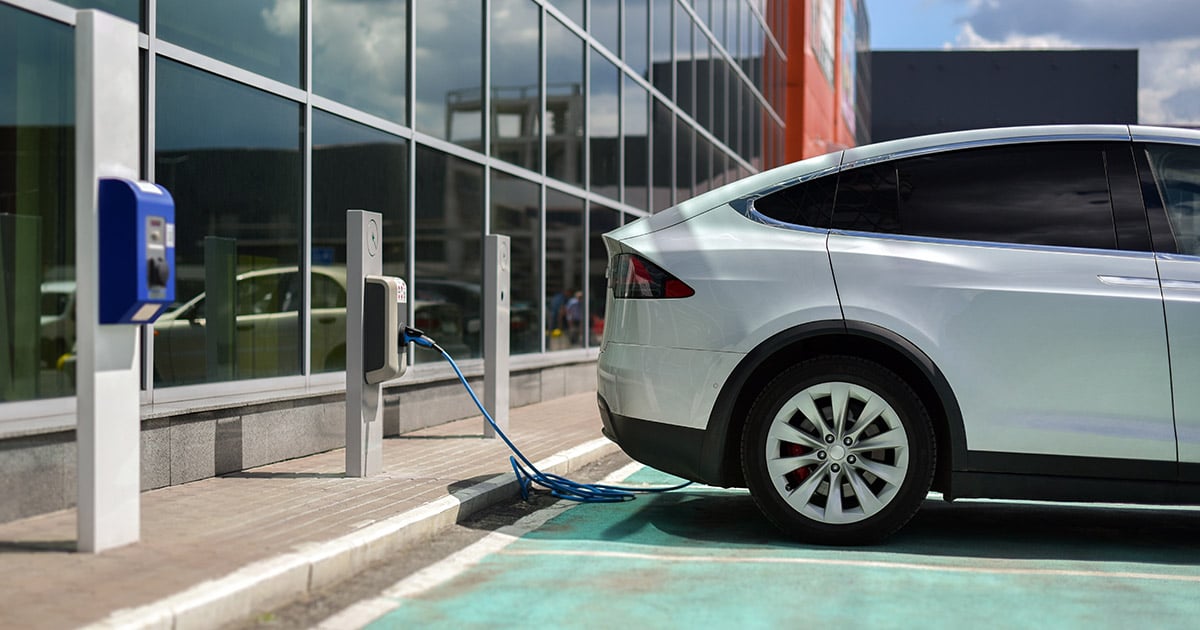How EV & Battery Companies Combat Range Anxiety

The fuel gauge used to be the primary source of drivers’ range anxiety. As the needle crept closer to E, the operator started internal calculations: Can I make it to the nearest gas station? Am I close to my destination? How fast should I be driving to preserve gas?
The context often compounded those worries. Drivers might be stuck in rush hour traffic, navigating a snowstorm, covering mountainous terrain, or, simply, lost.
Now, drivers who have made the switch to electric vehicles (EVs) have discovered a new form of range anxiety: the fear of being stranded between charging stations as their batteries drain.
As legislation and consumer demand pressure automakers to increase their EV production, consumers, car companies, and battery test chamber manufacturers are addressing the range anxiety challenge head-on.
What Is Range Anxiety?
Although range anxiety existed before the EV boom, it has now taken on a new meaning. Being stranded in the city, out of gas, is one thing. Having an EV lose its charge while on a remote desert highway is entirely different.
But range anxiety isn’t only about how far an EV can travel between charges. It also relates to how quickly the lithium-ion batteries that power EVs are able to recharge at stations. When in a rush, drivers often have to calculate the tradeoffs between arriving at their destination on time and getting enough charge to alleviate range anxiety.
According to the 2019 Fuel Economy Guide published by the Department of Energy, an all-electric vehicle (AVE) is capable of traveling up to 370 miles per charge. This equates to roughly 320 miles fewer than a hybrid-electric vehicle (HEV).
Furthermore, several road conditions undermine a battery’s charge, each influencing the degree to which a driver might experience range anxiety:
- Cold weather
- Aggressive driving, such as rapid acceleration or braking
- Improperly inflated tires or other out-of-tune automotive components
- Unnecessary accelerating, idling, and braking in traffic
- Use of chains or snow tires
- Driving on hills or mountainous terrain
Consumers are doing a few things to help tackle range anxiety.
Some are purchasing plug-in hybrid vehicles (PHEVs). Capable of operating purely on electric power for short distances, the gasoline engine of a PHEV kicks in as soon as the battery reaches its minimum charge. Additionally, PHEVs recharge with a standard electric outlet, so consumers don’t have to spend more to accommodate special equipment.
EV owners, on the other hand, are installing home charging stations. This can be an expensive option, but it certainly helps alleviate some of the anxiety knowing drivers don’t have to rely as much on finding a charging station between destinations.
Fortunately for consumers, they’re not the only ones bent on addressing range anxiety.
Combatting Range Anxiety
Battery manufacturers are working to combat range anxiety. Installing more charging stations around the country would certainly help, but that’s only one part of the problem. Drivers might be able to reach a station before running out of charge, but recharging batteries takes time, and, again, if they’re in a hurry, they may be out of luck.
In fact, many EV drivers are charging their vehicles overnight because it usually requires several hours to go from empty to fully charged (although this depends on the voltage of the charger, among other things).
Ultimately, it’s going to take more advanced battery technology in EVs to hold a longer charge and diminish range anxiety.
For example, battery testing has inspired engineers to shift toward prismatic cells given their higher performance and longer-lasting charge characteristics. Intended for non-stationary applications, prismatic cells are commonly stored in welded aluminum or harder plastics. They are made of layered anodes (negative or reducing electrodes), cathodes (positive or oxidizing electrodes), and separators contained within cubic-shaped moldings. This enables them to be more compact.
Since they can be stacked together and are designed smaller than other cell formats, prismatic batteries have a higher power-to-weight ratio.
With lighter, more powerful batteries, EV’s can travel greater distances between charges (and charge faster). Furthermore, lithium-ion-phosphate (LFP) prismatic cells have a smaller risk of thermal events, keeping consumers safer than alternative cell types.
Testing to Build Better EV Batteries
Notably, advancements like these are not possible without progress in battery testing technology.
For instance, Associated Environmental Systems recently developed a battery test chamber capable of testing up to 1000-amp batteries per channel: ATPHEAVY.
Now offered as standard in AES’s patent-pending All Test Platform (ATP) Series, ATPHEAVY battery fixtures accommodate testing for the most advanced EV batteries today.
While ATPHEAVY was designed specifically to meet the demands for high-amperage testing, other battery testing solutions remain part of the push for higher performing and faster-charging EV batteries.
Consider ATPPRIME: A lean environmental test chamber designed specifically for battery testing, it can be used with nearly any battery cell type, including cylindrical, coin, prismatic, pack, and pouch batteries. ATPPRIME offers engineers a safe and reliable way to test numerous batteries at once, saving time and money.
Suppose we will overcome range anxiety and create a more sustainable future. In that case, EVs need to find innovative ways to maximize battery power, largely dependent upon the environmental chambers used to test this important technology. Fortunately, battery test chamber manufacturers are rising up to meet the challenge.


